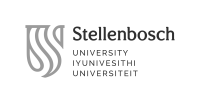Social Innovation
Professors
Schedule
Course Overview
This course prepares students to develop transformational responses to social problems through learning about concepts related to innovation, needs assessment, and resource development. The students are exposed to concepts of social innovation and will learn the skills necessary to implement and sustain change. This course provides students with knowledge about how to create new, innovative responses to social problems and put these ideas into action.
The course begins with a discussion of concepts related to social innovation in creating lasting change. Through examples of social innovation, students are introduced to the complementary paths of entrepreneurship and intrapreneurship. Next, the class prepares students to examine a community landscape or social problem to understand where needs exist for innovation. The class prepares students with training on innovation and design thinking as students prepare for participation in the Social Innovation Project. The Social Innovation Project allows students a first-hand look at innovation in action, and at how the redesign process promotes and supports new thinking. The course culminates with the development of a paper focused on how to present ideas to develop and sustain social innovation. Throughout the course, students are challenged to consider new ideas for solving social problems and taught the skills necessary to assess the need for innovation and to put these ideas into action.
Learning outcomes
This course has been designed to facilitate students’ acquisition of a range of learning dimensions, including knowledge, practice skills, professional values, and heightened cognitive and affective processes.
Knowledge
1. The field of social innovation as avenues for supporting social justice and sustainable development
2. Models of management practices that support innovation and/or lead to entrepreneurial efforts
3. The importance of stakeholder groups and multiple resources to advance innovation and support social well-being
4. The principals of opportunities and needs assessment to understand community/agency needs
5. Effective approaches to funding new projects and sustaining change
Skills
1. Effective communication with multiple stakeholders
2. Ability to conduct an opportunity and needs assessment to critically assess community needs
Values
1. A commitment to innovation for social justice
2. Awareness of self, values, and biases that contribute to ability to create innovation
3. Value of engagement with multiple stakeholders to achieve change
4. Application of innovation, assessment, and program development within diverse contexts
Cognitive and Affective Processes
1. Use critical thinking and logic models development to move from an individual, affective response to social problems and conditions to the development of organizational and community responses that reflect social, economic and environmental justice
2. Synthesize multiple sources of data and information to form a coherent presentation of the strengths and challenges of both communities and organizations and recommending interventions
3. Engage community residents and organization members as experts in the process of analyzing and evaluating communities and organizations
Textbooks
There are no required textbooks for this course. Electronic copies of all required readings across each session will be provided to the course participants at no cost.
Evaluation
Students undertake four assignments and one in-class closed book quiz as part of this course. Two assignments are group work while two assignments are individual work. The quiz is an individual work. To summarize, the following table shows the student activities/engagements and corresponding portion of the total points for this course:
Assignment 1 – Individual Assignment (Case Study Analysis) 20%
Assignment 2 – Group Assignment (Needs Assessment Report) 20%
Assignment 3 – Group Assignment (Social Innovation Group Project Presentation 20%
Quiz – Individual work 15%
Assignment 4 – Individual Assignment (Evaluation of Effectiveness) 15%
Class Participation and Attendance 10%
Teaching Methodologies
The format for the class will consist of a diverse set of lectures, activities, and discussions, supplemented with the hands-on innovation experience. The class will make extensive use of student participation, including small group exercises, student-led discussions, and case examples.
Course Outline
SECTION I: CONCEPTS AND FRAMEWORKS IN SOCIAL INNOVATION
SESSION 1: Introduction and Course Overview
• What is social innovation?
• Social justice as a goal
• Why do we need social innovation?
Supplemental Readings:
_Dearing, T. (2017). Social services, social justice, and social innovations: Lessons for addressing income inequality. Religions, 8(5), 89.
_Phils, J. A., Deiglmeier, K., & Miller, D. T. (2008). Rediscovering social innovation. Stanford Social Innovation Review, 6(4), 34-43.
[Note: Old but important article to build concept of social innovation as a vehicle to realize social justice]
_Pol, E., & Ville, S. (2009). Social innovation: Buzz word or enduring term? Journal of Socio-Economics, 38(6), 878-885.
[Note: Old but important article to build the concept of social innovation]
SESSION 2: Innovation and Change – I
• Theory of Diffusion of Innovation
• Application of Diffusion of Innovation
• Analyzing cases based on Diffusion of Innovation
Required Readings:
_Haider, M., & Kreps, G. L. (2004). Forty years of diffusion of innovations: Utility and value in public health. Journal of Health Communication: International Perspectives, 9(S1), 3-11. https://doi.org/10.1080/10810730490271430
[Note: Old but important article to build understanding on diffusion of innovation]
_Harris, J. K., Erwin, P. C., Smith, C., & Brownson, R. C. (2015). The diffusion of evidence-based decision making among local health department practitioners in the United States. Journal of Public Health Management And Practice: JPHMP, 21(2), 134–140. https://doi.org/10.1097/PHH.0000000000000129
SESSION 3: Innovation and Change - 2
• Examples of social innovation diffusion
• Case analysis
• Social innovation process
Required Readings:
_Emani, S, Yamin, C. K., Peters, E., Karson, A. S., Lipsitz, S. R., Wald, J.S., Williams, D. H., & Bates, D. W. Patient perceptions of a personal health record: A test of the Diffusion of Innovation Model. Journal of Medical Internet Research, 14(6), e150. (15 pages) https://doi.org/10.2196/jmir.2278
_Zhang, X., Yu, P., Yan, J, & Spil, I. T. A. M. (2015). Using diffusion of innovation theory to understand the factors impacting patient acceptance and use of consumer e-health innovations: A case study in a primary care clinic. BMC Health Services Research, 15(71), 1-15. https://doi.org/10.1186/s12913-015-0726-2
SECTION II: CONTEMPORARY APPROACH TO SOCIAL INNOVATION
SESSION 4: Problem Definition and Reframing
• Defining a problem
• Understanding root cause
The individual assignment one [case study analysis] is due end of the day of session 4.
Please let the instructor know your group members for the group project by session 4.
Required Readings:
_Berzin, S. C., & Pitt-Catsouphes, M. (2014). A social work approach to social innovation. International Journal of Innovation, Creativity and Change, 1(4), 1-14.
_Pekar, T. (2012). The problem with problem statements (pp. 1-4). Stanford Social Innovation Review. www.ssireview.org/blog/entry/the_problem_with_problem_statements.
SESSION 5: Open Innovation and Prototyping
• Ideation
• Open innovation
• Crowdsourcing
• Prototyping
Syllabus for the quiz will be provided today.
Required Readings:
_Chesborough, H. W. (2003). The era of open innovation. MIT Sloan Management
Review: Sloan Select Collection, Spring, 44(3), 35-47. http://sloanreview.mit.edu/the-magazine/2003-spring/4435/the-era-of-open-innovation/
[Old but an important article on open innovation]
_Mount, M., & Martinez, M. G. (2014). Social media: A tool for open innovation. California Management Review, 56(4), 124-143.
https://doi.org/10.1525/cmr.2014.56.4.124
_Stanford University Institute of Design. (2013). Ideate mixtape (pp. 1-9). https://static1.squarespace.com/static/57c6b79629687fde090a0fdd/t/58993c9e579fb316f50f3f37/1486437546147/ideate-mixtape-v8.pdf
SESSION 6: Assessment Strategies for Community Needs and Opportunities: Human Centered Design Thinking – I
• Intro to design thinking
• The power of empathy
• Discovery techniques
• Designing inclusive & equitable experiences
Required Readings:
_Battarbee, K., Suri, J. F., & Howard, S. G. (n.d.). Empathy on the edge.
https://new-ideo-com.s3.amazonaws.com (14 pages)
_Bodine, K. (2012). Why it takes guts to do human-centered design.
https://www.forrester.com/blogs/12-11-30-why_it_takes_guts_to_do_human_centered_design/ (2 pages)
_Brown, T., & Wyatt, J. (Winter, 2010). Design thinking for social innovation. Stanford Social Innovation Review. https://ssir.org/articles/entry/design_thinking_for_social_innovation (7 pages)
SESSION 7: Assessment Strategies for Community Needs and Opportunities: Human Centered Design Thinking – II
• Developing personas
• Defining & framing opportunities
• Brainstorming tools & techniques
Required Readings:
_Miller, M. E. (2016). The difference between a journey map and a service blueprint. https://blog.practicalservicedesign.com/the-difference-between-a-journey-map-and-a-service-blueprint-31a6e24c4a6c (12 pages)
_Usability.gov. (n.d.). Personas. https://www.usability.gov/how-to-and-tools/methods/personas.html (5 pages)
SESSION 8: Assessment Strategies for Community Needs and Opportunities: Traditional methods and Positive Deviance
• Assessment strategies
• Traditional methods
• Positive deviance
Required Readings:
_Bhattacharya, S., & Singh, A. (2019). Using the concepts of positive deviance, diffusion of innovation and normal curve for planning family and community level health interventions. Journal of Family Medicine and Primary Care, 8(2), 336–341.
_Wolfer, T. A., & Wilson, B. L. (2019). Seeking champions for change: A positive deviance approach for social work. Families in Society, 100(2), 151–163. https://doi.org/10.1177/1044389418811600
SESSION 9: Assessment Strategies for Community Needs and Opportunities: Application of Positive Deviance
• Applying Positive Deviance (PD) technique to seek solutions for a social problem
Note: Students will take in-class quiz in Session 9.
Required Readings:
_Barbosa, C. E., Masho, S. W., Carlyle, K. E., & Mosavel, M. (2017). Factors distinguishing positive deviance among low-income African American women: A qualitative study on infant feeding. Journal of Human Lactation, 33(2), 368–378. https://doi.org/1,0.1177/0890334416673048
_Lawton, R., Taylor, N., Clay-Williams, R., & Braithwaite, J. (2014). Positive deviance: A different approach to achieving patient safety. BMJ Quality & Safety, 23, 880-883.
_Rose, A. J., & McCullough, M. B. (2017). A practical guide to using the Positive Deviance method in health services research. Health Services Research, 52(3), 1207–1222. https://doi.org/10.1111/1475-6773.12524
SESSION 10: Implementation of Innovation – Part 1
• What are social enterprises
• Types of social enterprises
• Sustenance of social enterprises
Required Readings:
_Cho, S., Kim, A., & Mor Barak, M. E. (2017). Does diversity matter? Exploring workforce diversity, diversity management, and organizational performance in social enterprises. Asian Social Work and Policy Review, 11(3), 193-204.
_Fernando, R. (2017). Social enterprise. Encyclopedia of social work. https://oxfordre.com/socialwork/view/10.1093/acrefore/9780199975839.001.0001/acrefore-9780199975839-e-1027 (15 pages)
SESSION 11: Implementation of Innovation – Part 2
• Sustenance of social enterprises
Required Readings:
_MIT Sloan Management Review. (2011). Top 10 Lessons on the new business of innovation. MIT Sloan Management Review: Sloan Select Collection, Winter.
http://sloanreview.mit.edu/files/2011/06/INS0111-Top-Ten-Innovation.pdf.
SESSION 12: Scaling and Evaluation [M3.2, M4.1, M4.2, M6.2, M8.1, G9.4]
• From idea to impact
• Scaling an impact
• Implementation Science and RE-AIM evaluation framework
Required Readings:
_Hartmann, A., & Linn, J. F. (2008). Scaling up a framework and lessons for development effectiveness from literature and practice (pp. 1-19). Brookings. https://www.brookings.edu/research/scaling-up-a-framework-and-lessons-for-development-effectiveness-from-literature-and-practice/
[Old but an important article on scaling science)
_Westley, F., & Antadze, N. (2010). Making a difference: Strategies for scaling social innovation for greater impact. Innovation Journal, 15(2), 1-19.
The Needs Assessment Report (group Assignment) due end of the day of Session 12.
SESSION 13: Evaluation of Effectiveness
• Implementation science
• Application of RE-AIM as an implementation science evaluation framework to assess effectiveness
Required Readings:
_Gaglio, B., Shoup, J. A., & Glasgow, R. E. (2013). The RE-AIM framework: A systematic review of use over time. American Journal of Public Health, 103(6), e38-e46.
_Glasgow, R. E., Vogt, T. M., & Boles, S. M. (1999). Evaluating the public health impact of health promotion interventions: The RE-AIM framework. American Journal of Public Health, 89(9), 1322-1327. https://doi.org/10.2105/AJPH.89.9.1322
[Old but important article on RE-AIM Evaluation framework]
_Jilcott, S., Ammerman, A., Sommers, J., & Glasgow, R. E. (2007). Applying the RE-AIM framework to assess the public health impact of policy change. Annals of Behavioral Medicine, 34(2), 105-114.
SESSION 14: Student’s Social Innovation Group Project presentation
• Group Project Presentation
SESSION 15: Student’s Social Innovation Group Project presentation
• Group Project Presentation
Note: Students will submit assignment 4 (individual assignment) by end of day of Session 15.
Last update: May 11, 2023




















